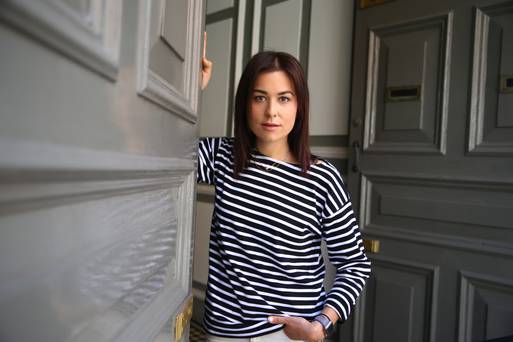Is it just me or are other people ever astonished at the price difference between essentially identical things?
I needed a new coat for winter, and being the obsessive, single-minded, nightmare that I am, the research and reconnaissance I went through to choose it was extensive. The range of prices was so arresting because whenever I went digging into the ‘product description’ it was almost invariably some blend of wool, polyester and acrylic, but the price difference was often several hundred euro. The craziest one I saw was an unnameable luxury brand named by combining the letters of the two designers who founded it. The double-breasted jacket was going for €1,950.
I had a certain urgency about me as I searched for a coat. I have been in hospital with some bronchial issues and felt a duty of care to keep myself warm. I got all my necessary winter inoculations and began shopping. Maybe it was the infection in my lung, maybe it was the price tags, but I nearly collapsed on to the plush carpet of the shop when I saw what I was expected to accept as a normal price tag. Some of the prices looked like phone numbers.
The Brand Name that Must Not be Named is only valuable because we have all tacitly agreed that it is. It’s kind of the same with money. Real money. Obviously, real money can buy real things but it only works because you and I agree that the bank notes have an inherent worth that is greater than the paper it is printed on. Otherwise, I could hand you Monopoly money and you’d accept it. So it’s the story around the bank note that gives them their value. In the same way it’s the story around the brand of the coat that gives it worth.
Please log in or register with Independent.ie for free access to this article.
Log In
New to Independent.ie? Create an account
I once read that Abercrombie & Fitch paid one of the guys from reality-TV show Jersey Shore not to wear their clothes. He was a problematic, misogynistic fellow and they didn’t want his image messing with the story of their brand. This story shows us how the narrative around things is what makes them popular or unpopular. It’s a dangerous sort of fickleness, really.
Brands, money and banks are only really as strong as the stories that surround them. I reckon that’s why recessions happen. I’m no economist, but if someone starts a rumour that a bank is in trouble, and people believe it, they panic and rush to get their money out, which inevitably leads the bank to be in trouble because it doesn’t have access to cash and therefore can’t deliver. It’s self-fulfilling based on the narrative.
It’s not too dissimilar to how my chest infection works. Even though it’s every brand’s dream to ‘go viral’, the theory of how that works is based on, well, viruses. My infection spread because it found a receptive host. If all my cells had been inoculated against that particular strain, it wouldn’t have caught on.
That’s why we get caught up in certain trends and fads and not others. I was one of the first passengers on the Beanie Baby bandwagon of the early 2000s. The craze of the tiny collectable teddies spread like contagion, and people couldn’t recover as quickly as the craze spread. It was furry-friend fever for well over a year. On the other hand, I totally missed the Ice Bucket Challenge craze of 2014. I didn’t encounter the contagion until it had passed (I was doing a social-media cleanse, notions, I know) and so I was immune to the power of it.
Things get their value because the hype about them spreads. People think that ‘going viral’ is only as recent as YouTube. But things have been going viral since the Old Testament. Even here at home, stories have been ‘going viral’ since before Mary appeared in Knock.
The reason the coat is so expensive is that the story around the brand has gone viral. It has found receptive hosts to spread it. People believe the brand is worth the price because we have all agreed it is. But just like viruses, things mutate, go away and come back as something different.
Have you ever noticed a brand that was really cheap and ubiquitous when you were a kid is suddenly the ‘in’ brand and now the same shoes you bought for £10 are like €70? The craftsmanship and the materials remain identical but the story changes. Maybe someone famous was seen wearing the brand, maybe they’ve invested in a slick ad campaign, or maybe a competitor has been wrapped up in a sex scandal. There are as many reasons as there are flu strains.
I bought a coat, it keeps me warm, it’s made of the same stuff as the €1,950 coat. And that’s the story I’m telling myself.
As we step into Christmas and get tied up in price tags and presents, keep an ear out for the narratives around what you spend your money on. It might save you the cost of a trip to the doctor.
Source: Read Full Article
